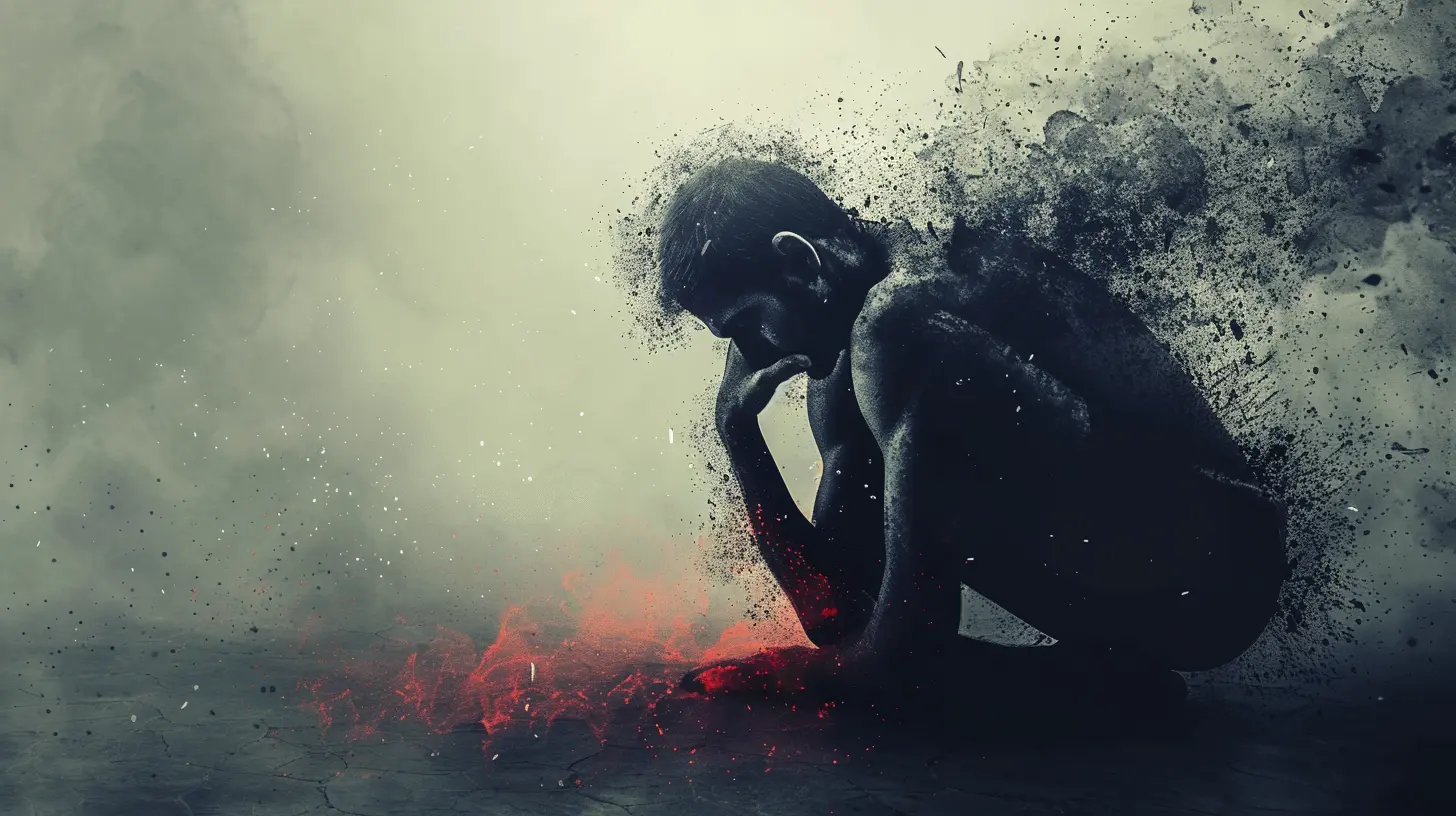Navigating Grief and Loss After a Traumatic Event
7 July 2025
Grief is a universal experience, but when it's tied to a traumatic event, the journey through it can feel like navigating a dense, uncharted forest. The path is unclear, the obstacles are many, and the emotional terrain can be overwhelming. Whether you’ve lost a loved one, witnessed a tragedy, or experienced personal trauma, the weight of grief and loss can feel impossible to bear. But here's the thing — you're not alone, and there are ways to cope, heal, and find your way through.
In this article, we'll explore the complex relationship between grief and trauma, the emotional and physical toll it can take, and most importantly, how you can navigate the storm to reach a place of acceptance and healing.

Understanding Grief After Trauma
Grief is a normal reaction to loss, but after a traumatic event, it can take on new dimensions. It's not just sadness or sorrow that you feel; sometimes, it's fear, anger, guilt, and even confusion. Trauma exacerbates grief, adding layers of emotional pain that can make the process of moving forward feel nearly impossible.Grief vs. Traumatic Grief
It’s important to differentiate between ‘normal’ grief and traumatic grief. In typical grieving, you experience a range of emotions, but there’s generally a sense of emotional processing over time. Traumatic grief, on the other hand, is often sudden, unexpected, and deeply shocking. It can feel like your world has turned upside down in an instant.For example, losing a loved one to a long illness gives some room for emotional preparation, whereas losing someone in a car accident or a violent way can leave you in a state of shock and disbelief. This additional layer of trauma complicates the grieving process, making it much harder to find closure.
The Stages of Grief: Do They Apply Here?
You’ve probably heard of the stages of grief — denial, anger, bargaining, depression, and acceptance. While these stages apply to many cases, they aren’t a hard and fast rule, especially when trauma is involved. Trauma can disrupt the typical grief cycle, leaving you stuck in certain stages for longer or skipping others altogether.For instance, you might remain in denial for much longer after a traumatic event because your brain is struggling to digest the reality of what happened. Or you might feel a persistent sense of anger long after the event, fueled by the injustice of what occurred.
Remember, there’s no "right" or "wrong" way to grieve, and everyone’s journey is unique. The key is to recognize that your experience is valid, even if it doesn’t fit into a neat formula.

The Emotional Impact of Traumatic Grief
Dealing with grief after a traumatic event is emotionally exhausting. You might feel like you're riding a rollercoaster of emotions, with extreme highs and crushing lows. Here are some of the common emotional responses you may experience:1. Shock and Numbness
Initially, you might feel emotionally numb or in shock. It’s as if your brain has put up an emotional barrier to temporarily protect you from the full weight of the trauma. This is the body’s way of giving you time to process the event in manageable chunks.2. Anger and Frustration
Anger is a normal part of grief, but after trauma, it can be particularly intense. You might feel anger at the world, the person responsible for the trauma, or even at yourself. This anger often stems from a sense of helplessness or injustice.3. Guilt and Shame
When trauma is involved, it’s common to experience guilt or shame. You might wonder if there was something you could’ve done differently or feel guilty about surviving when others did not. This is often referred to as "survivor’s guilt," and it can be one of the most difficult emotions to cope with.4. Anxiety and Fear
Trauma can leave you feeling unsafe, even in situations that are objectively secure. You may develop anxiety, panic attacks, or a heightened sense of fear, especially when reminded of the traumatic event. This is your body’s fight-or-flight response kicking in, trying to protect you from further harm.5. Sadness and Despair
Of course, sadness is a central part of grief. But after trauma, this sadness can feel deeper and more pervasive. You might feel lost, hopeless, or like you’ll never be able to move forward. It’s important to remember that while these feelings are intense, they are also temporary and manageable with the right support.
The Physical Impact of Grieving After Trauma
While the emotional side of grief often takes center stage, it’s crucial not to overlook the physical toll grief can have on your body. Trauma and grief can manifest in physical symptoms that are just as debilitating as the emotional ones.1. Fatigue and Exhaustion
Grief is draining — both emotionally and physically. It’s common to feel constantly tired, even if you’re getting enough sleep. This fatigue can make it difficult to concentrate, stay motivated, or engage in regular activities.2. Sleep Disturbances
Many people experience trouble sleeping after trauma. You might have nightmares, insomnia, or wake up frequently during the night. Your mind is on high alert, making it difficult to relax and get the restful sleep you need.3. Changes in Appetite
Grief can also impact your appetite. Some people lose interest in food, while others may find themselves overeating in an attempt to comfort themselves. Both reactions are normal, but it’s important to stay mindful of your body’s needs during this time.4. Heightened Stress Response
Your body’s stress response — the release of cortisol and adrenaline — can be on overdrive after a traumatic event. This can lead to symptoms such as headaches, muscle tension, digestive issues, and a weakened immune system.
Coping Strategies for Navigating Grief and Trauma
Coping with grief and trauma is a deeply personal journey, but there are strategies that can help you manage the emotional and physical symptoms. While no one solution fits all, integrating these approaches into your life can make the process more bearable.1. Allow Yourself to Grieve
First and foremost, give yourself permission to grieve. There’s no timeline for healing, and it’s okay to feel all the emotions that come with it. Suppressing your feelings will only prolong the healing process.2. Seek Professional Help
Traumatic grief can be incredibly difficult to navigate on your own. A therapist, counselor, or grief specialist can help you work through your emotions, develop coping strategies, and provide a safe space to process your trauma.If your traumatic grief is particularly intense, you might be dealing with Post-Traumatic Stress Disorder (PTSD). In such cases, trauma-focused therapies like Cognitive Behavioral Therapy (CBT) or Eye Movement Desensitization and Reprocessing (EMDR) could be helpful.
3. Lean on Your Support System
It’s easy to isolate yourself when you’re grieving, but you don’t have to go through it alone. Reach out to friends, family, or support groups. Talking about your loss and trauma can help you process your emotions and feel less isolated. Sometimes, just knowing someone is there to listen can make a world of difference.4. Practice Mindfulness and Grounding Techniques
After trauma, your mind may feel like it’s stuck in overdrive, constantly replaying the event or imagining worst-case scenarios. Mindfulness techniques, such as meditation, deep breathing, or grounding exercises, can help calm your mind and bring you back to the present moment.One simple grounding exercise is the 5-4-3-2-1 method:
- Name 5 things you can see.
- Name 4 things you can touch.
- Name 3 things you can hear.
- Name 2 things you can smell.
- Name 1 thing you can taste.
These exercises help shift your focus away from distressing thoughts by anchoring you in the present.
5. Engage in Physical Activity
Exercise might be the last thing you feel like doing when you’re grieving, but physical activity can help release pent-up emotions and stress. Even a short walk outside can lift your mood and give you a sense of control over your body.6. Create Rituals to Honor Your Loss
Sometimes, creating rituals or memorials can help you process grief. Whether it’s lighting a candle, writing letters to your lost loved one, or creating a small memorial space in your home, these actions can provide a sense of closure and give you a tangible way to honor your loss.Finding Hope and Healing
It’s important to remember that while grief is intense, it is also temporary. The pain you feel right now won’t last forever, even if it feels all-consuming. Healing is possible, and over time, the sharp edges of your grief will soften.There’s no magic formula for "getting over" grief, but with time, support, and self-compassion, you’ll find that the weight of your loss becomes lighter, and brighter days will return. The goal isn’t to forget or erase what happened, but to learn how to carry your grief in a way that doesn’t hold you back from living.
Conclusion
Navigating grief and loss after a traumatic event is like trying to find your way through a storm. It’s chaotic, painful, and at times, it feels like there's no end in sight. But storms eventually pass, and so too will the intensity of your grief. By allowing yourself to feel, seeking support, and taking small steps toward healing, you can emerge from the storm stronger, more resilient, and ready to embrace life once again.all images in this post were generated using AI tools
Category:
TraumaAuthor:

Christine Carter
Discussion
rate this article
2 comments
Faye Kelly
Grief is a personal journey; embrace it to foster healing and growth.
November 30, 2025 at 5:33 PM
Faryn Evans
Thank you for sharing these insights; they offer comfort and hope during difficult times.
July 26, 2025 at 4:52 PM

Christine Carter
Thank you for your kind words! I'm glad the insights resonate with you during this challenging time.


